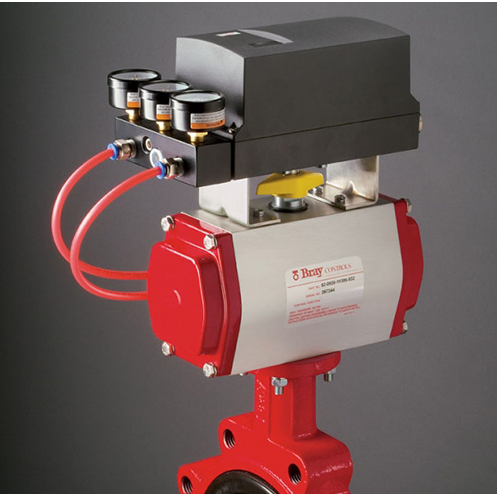Today's high-speed manufacturing systems are expected to operate with pinpoint accuracy and millisecond timing. Engineers working in automation are always on the hunt for low-cost methods to boost positioning control and precision.
Pressing bushings into housings is an automated procedure made possible by an electropneumetic positioning system (EPPS).
Most automated systems' motion controls have historically relied on electromechanical positioning. However, electropneumetic positioner is gaining traction as a viable alternative. This technology is based on systems that use precise valves to regulate the flow or pressure and position an actuator. See it in more detail below.
Electromechanical Basics
Components in electromechanical systems are lifted, moved, and placed with the help of electric motors and linear devices, including profiled rails, ball screws, and linear modules. The positional accuracy provided by such devices can be very high. The term "accurate positioning" describes the precision with which an actuator is positioned at any given point along a path of motion, not just at its starting and stopping points. Motion sequences in high-speed automation must be precise in terms of positioning and time if production rates, output, and product quality are to be maximized.
Positioning by electromechanics can fulfill these criteria. However, there are significant downsides to electromechanical devices that, over time, might raise production costs, disrupt production, and reduce productivity.
Electropneumetic positioner is gaining popularity among engineers because of its various benefits, including increased productivity, improved repairability, and a cheaper total cost of ownership. Pneumatic actuation systems, like electromechanical ones, may precisely regulate positioning at any point in a motion sequence, not just at the beginning or finish. In addition, they offer multiple implementations from which engineers can choose the optimal design for any project.
The Benefits of Pneumatics
Electromechanical positioning systems, for instance, might overheat, leading to performance changes and increased wear and tear. As a result, a lot of downtime is needed for cooling. Most low-cost systems can only handle 50% duty cycles, meaning they shut down for as long as they are on. On the other side, pneumatic positioning systems don't use any moving parts, therefore they won't overheat. This allows for a 100% duty cycle with components that maintain their temperature and function continuously.
Common components of EPPS systems include electropneumetic pressure regulators. Pneumatic positioning techniques are typically more efficient than electrical alternatives. For instance, electromechanical systems require power just to maintain their current state. In addition, when the power goes out, all progress made on electromechanical systems is lost as they reset. As a result, productivity drops.
In pneumatics, this is not an issue. Pneumatic flow control is used in designs so that the cylinder piston does not move in either direction when the valve is in the middle position. Pneumatic positioning devices make it far simpler to resume production during a power outage at a production facility or system. Normally closed valves and proportional pressure control are equally useful in a power outage.
Pneumatic parts, meanwhile, are low-maintenance and cheap to fix. A pneumatic cylinder can be easily and affordably serviced or replaced when it fails. However, a new, expensive Electropneumetic positioner is usually necessary when an electromechanical system develops problems.
Because of these benefits and the low-maintenance nature of pneumatic devices, the total cost of ownership is far cheaper than it would be with an electromechanical system. In some cases, the cost of the cabling on an electromechanical device is greater than that of an equivalent pneumatic system.
Flow Control
The use of pneumatically powered actuation achieves accurate and dependable positioning. Directional flow control is used by the vast majority of pneumatic positioning systems, which also often include control valves, cylinders, and basic sensors. A system like this would get feedback on the position of the piston and use that information to determine the direction of airflow necessary to attain the desired position. The actuator can be moved to the desired position by adjusting the valve to direct pressurized air into the appropriate cylinder port. When the valve is switched around, the cylinder can be retracted in the opposite direction.
This method allows for fine-grained, incremental positioning thanks to its high degree of directional flow control. The bore and stroke of the pneumatic actuator determine which valves can be used in such a system. The range of adjustable airflow is typically between zero and one thousand liters per minute.
Pneumatic flow control has certain advantages for positioning but has some downsides. The fact that pneumatic systems cannot be sealed means that some air and pressure will always escape, which is the source of the most common worry.
Even a tiny leak will cause the piston to shift in a pneumatic cylinder with directional flow control. When the piston moves, the controller of the positioning system receives motion data from the sensor and makes a little adjustment to the flow rate. Dithering refers to a slight but persistent back-and-forth motion that has a detrimental effect on the precision and functionality of a device.


